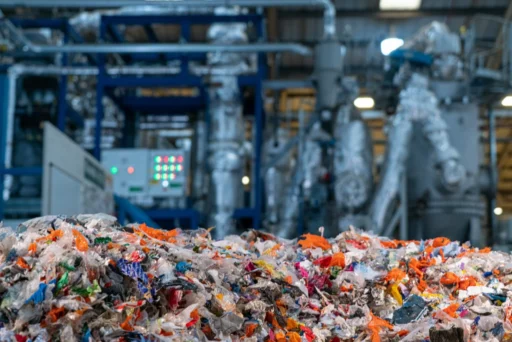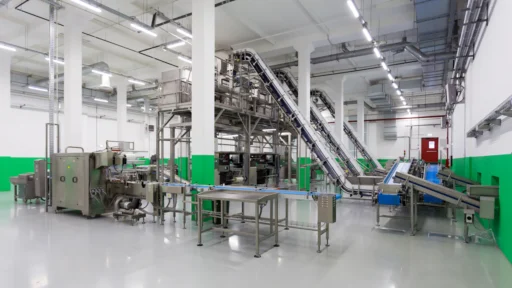-
Table of Contents
- Understanding the Plastic Problem
- The Lifecycle of Plastic
- The Current State of Plastic Recycling
- Types of Plastic and Their Recyclability
- Finding Stable Resources for Plastic Recycling
- Improving Collection Systems
- Educating Consumers
- Investing in Recycling Infrastructure
- Developing Local Markets for Recycled Materials
- Innovative Approaches to Plastic Recycling
- Chemical Recycling
- Plastic-Eating Enzymes
- Blockchain Technology in Recycling
- The Role of Policy in Creating Stable Resources
- Extended Producer Responsibility (EPR)
- Plastic Taxes and Bans
- Recycled Content Requirements
- The Future of Plastic Recycling
- The Role of Artificial Intelligence
Plastic Recycling: The Quest for Stable Resources
In an era where environmental consciousness is at an all-time high, plastic recycling has become a crucial topic of discussion. As young professionals and eco-conscious consumers in their 20s and 30s, we’re increasingly aware of the impact our daily choices have on the planet. The question that often arises is: How can we find stable resources for plastic recycling and make a meaningful difference?
Understanding the Plastic Problem
Before delving into the solutions, it’s essential to grasp the magnitude of the plastic problem we face. Every year, millions of tons of plastic waste end up in our oceans, landfills, and ecosystems. This waste not only pollutes our environment but also poses significant risks to wildlife and human health.
[Image: A beach littered with plastic waste, showcasing the environmental impact]
The recycling process, while beneficial, is not without its challenges. One of the most significant hurdles is finding stable resources – both in terms of plastic waste to recycle and reliable facilities to process it. This instability often leads to inefficiencies in the recycling system and can discourage participation.
The Lifecycle of Plastic
To truly understand the recycling process, we need to examine the lifecycle of plastic. From production to disposal, plastic goes through several stages, each with its own environmental implications. The production of plastic relies heavily on fossil fuels, contributing to greenhouse gas emissions. Once produced, plastic products are used – often for a very short time – before being discarded.
This is where the concept of a circular economy comes into play. Instead of the traditional linear model of “take-make-dispose,” a circular economy aims to keep resources in use for as long as possible, extract maximum value from them, and then recover and regenerate products and materials at the end of their service life.
The Current State of Plastic Recycling
Despite increased awareness and efforts, plastic recycling rates remain disappointingly low in many parts of the world. In the United States, for example, only about 9% of plastic waste is recycled. This low rate is due to various factors, including contamination of recyclables, lack of infrastructure, and the complexity of recycling different types of plastics.
Moreover, the global plastic recycling market has faced significant disruptions in recent years. China’s ban on importing plastic waste in 2018 sent shockwaves through the recycling industry, forcing many countries to reassess their recycling strategies and find new solutions.
Types of Plastic and Their Recyclability
Not all plastics are created equal when it comes to recycling. Understanding the different types of plastic and their recyclability is crucial for effective recycling practices. The most commonly recycled plastics are:
1. PET (Polyethylene Terephthalate): Used in water bottles and food containers
2. HDPE (High-Density Polyethylene): Found in milk jugs and shampoo bottles
3. PVC (Polyvinyl Chloride): Used in pipes and window frames
4. LDPE (Low-Density Polyethylene): Found in plastic bags and squeeze bottles
5. PP (Polypropylene): Used in bottle caps and food containers
6. PS (Polystyrene): Found in disposable cups and plates
While PET and HDPE are widely recycled, other types of plastic pose more challenges. This complexity often leads to confusion among consumers about what can and cannot be recycled.
[Image: A diagram showing different types of plastic and their recycling symbols]
Finding Stable Resources for Plastic Recycling
Now that we’ve established the context, let’s explore how we can find stable resources for plastic recycling. This involves addressing both the supply of recyclable plastics and the infrastructure needed to process them effectively.
Improving Collection Systems
One of the first steps in establishing stable resources for recycling is improving collection systems. This involves making recycling more accessible and convenient for consumers. Some effective strategies include:
1. Expanding curbside recycling programs
2. Implementing deposit return schemes for plastic bottles
3. Setting up collection points in high-traffic areas
4. Using smart bins that can sort different types of plastic automatically
By making recycling easier and more accessible, we can increase the volume of plastic waste collected, providing a more stable supply for recycling facilities.
Educating Consumers
Education plays a crucial role in improving the quality and quantity of recyclable plastics. Many people want to recycle but are unsure about what can be recycled or how to prepare items for recycling properly. Targeted education campaigns can help address this issue.
These campaigns should focus on:
1. Identifying recyclable plastics
2. Proper cleaning and preparation of recyclables
3. The importance of avoiding contamination
4. The impact of recycling on the environment
By empowering consumers with knowledge, we can significantly improve the quality of recyclable materials, making them more valuable and easier to process.
Investing in Recycling Infrastructure
To create a stable recycling system, significant investment in infrastructure is necessary. This includes:
1. Building more recycling facilities
2. Upgrading existing facilities with advanced sorting technologies
3. Developing new recycling technologies for hard-to-recycle plastics
4. Creating local markets for recycled materials
Governments and private companies need to work together to fund these initiatives. In many cases, public-private partnerships can be an effective way to drive investment in recycling infrastructure.
Developing Local Markets for Recycled Materials
One of the challenges in plastic recycling is finding stable markets for recycled materials. Developing local markets can help address this issue by reducing dependence on international markets and creating a more sustainable recycling ecosystem.
Strategies for developing local markets include:
1. Implementing policies that require the use of recycled content in new products
2. Providing incentives for companies that use recycled materials
3. Supporting research and development of new applications for recycled plastics
4. Encouraging collaboration between recyclers and manufacturers
By creating demand for recycled materials locally, we can ensure a more stable and sustainable recycling system.
[Image: A modern recycling facility with advanced sorting technology]
Innovative Approaches to Plastic Recycling
As we look for stable resources for plastic recycling, it’s important to consider innovative approaches that can revolutionize the industry. These new technologies and methods have the potential to make recycling more efficient and expand the types of plastics that can be recycled.
Chemical Recycling
Chemical recycling is an emerging technology that breaks down plastic into its chemical components, which can then be used to create new plastics or other products. This process has several advantages over traditional mechanical recycling:
1. It can handle mixed and contaminated plastics
2. It produces higher quality recycled materials
3. It can recycle plastics that are currently difficult to recycle mechanically
While chemical recycling is still in its early stages, it shows great promise for creating a more circular plastic economy.
Plastic-Eating Enzymes
Scientists have discovered and engineered enzymes that can break down plastic at a molecular level. These enzymes could potentially be used to recycle plastics more efficiently and handle types of plastic that are currently difficult to recycle.
Research in this area is ongoing, but the potential applications are exciting. Imagine a future where we could simply add these enzymes to plastic waste and watch it break down into reusable components.
Blockchain Technology in Recycling
Blockchain technology is being explored as a way to improve transparency and traceability in the recycling process. By creating an immutable record of each step in the recycling chain, blockchain can:
1. Increase trust in the recycling process
2. Provide better data on recycling rates and efficiency
3. Enable more accurate tracking of recycled content in products
4. Facilitate the creation of incentive systems for recycling
While still in its early stages, blockchain has the potential to revolutionize how we manage and track recycled materials.
The Role of Policy in Creating Stable Resources
Government policies play a crucial role in creating stable resources for plastic recycling. Effective policies can drive investment, create markets for recycled materials, and encourage better recycling practices.
Extended Producer Responsibility (EPR)
EPR policies make manufacturers responsible for the entire lifecycle of their products, including disposal and recycling. These policies can:
1. Incentivize companies to design products with recycling in mind
2. Create funding streams for recycling infrastructure
3. Encourage the use of recycled materials in new products
Many countries have implemented EPR policies for packaging, and these have shown promising results in increasing recycling rates and improving recycling infrastructure.
Plastic Taxes and Bans
Taxes on single-use plastics and outright bans on certain plastic products can help reduce plastic waste and create more stable resources for recycling. These policies:
1. Encourage the use of alternatives to single-use plastics
2. Generate revenue that can be invested in recycling infrastructure
3. Raise awareness about the environmental impact of plastic waste
While these policies can be controversial, they have been effective in reducing plastic consumption and encouraging recycling in many parts of the world.
Recycled Content Requirements
Policies that require a certain percentage of recycled content in new products can help create stable markets for recycled materials. These requirements:
1. Increase demand for recycled plastics
2. Encourage investment in recycling infrastructure
3. Drive innovation in recycling technologies
Several countries and regions have implemented or are considering such policies, particularly for plastic packaging.
The Future of Plastic Recycling
As we look to the future, it’s clear that finding stable resources for plastic recycling will require a multi-faceted approach. From improving collection systems and educating consumers to investing in new technologies and implementing supportive policies, there are many avenues to explore.
[Image: A futuristic recycling facility with robots and AI-powered sorting systems]
The Role of Artificial Intelligence
Artificial Intelligence (AI) is set to play a significant role in the future of plastic recycling. AI can be used to:
1. Improve sorting accuracy in recycling facilities
2. Optimize collection routes for recycling trucks
3. Predict recycling trends and help plan infrastructure needs
4. Assist in the development






